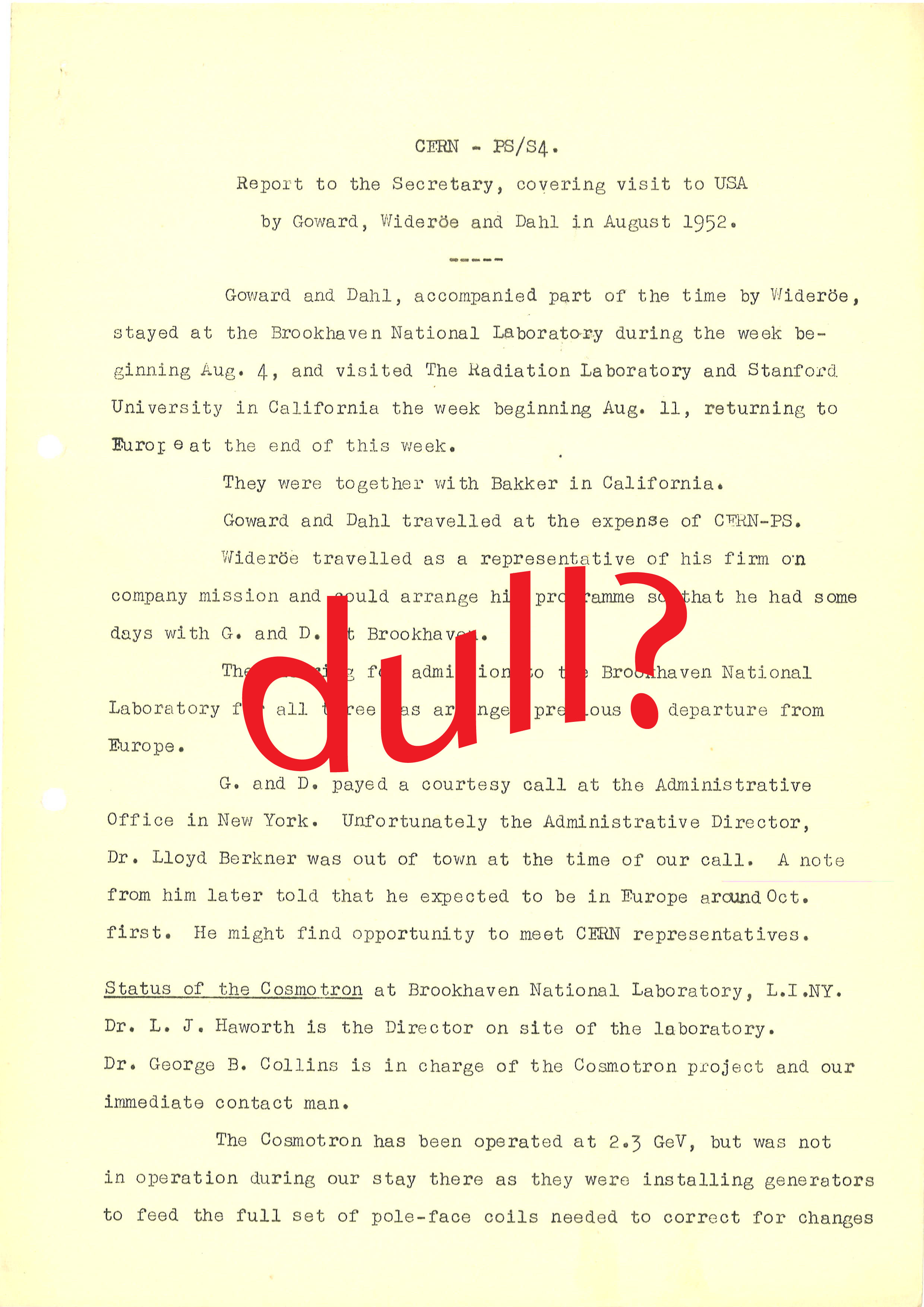...61 years ago
Too often trip reports are just boring administrative documents, but this one caused a radical rethink of the design for CERN’s Proton Synchrotron. Suddenly a relatively straightforward engineering challenge became a development project for an untested idea.
Plans were already underway for CERN’s large accelerator, a scaled-up version of Brookhaven’s Cosmotron, when Odd Dahl, Frank Goward and Rolf Wideröe visited Brookhaven in 1952. There they joined in discussions about a new strong-focusing (or alternating gradient focusing) technique, which meant smaller magnets could be used to guide particles round an accelerator provided they were arranged with their field gradients facing alternately inwards and outwards instead of the conventional outward-facing alignment. Dahl recommended laying aside plans for a 10 GeV accelerator for the time being in order to investigate the idea further (CERN-PS-S4).
It was a risky decision to follow this unexplored route, but one that paid off by allowing construction of a much more powerful machine at little extra cost. When the Proton Synchrotron came into operation in November 1959 it had an energy of 24 GeV, later increased to 28 GeV.

